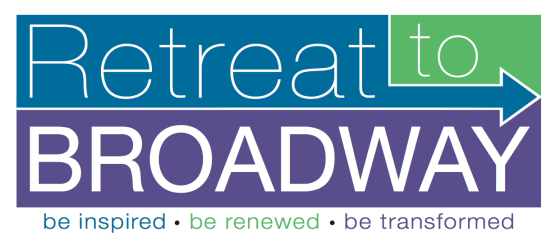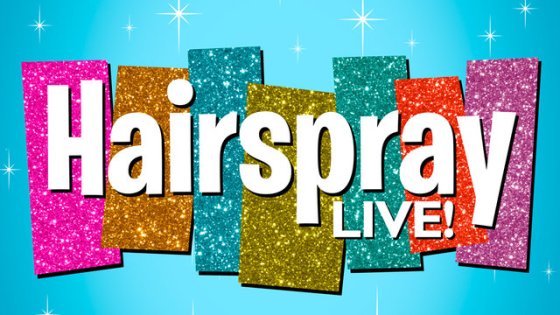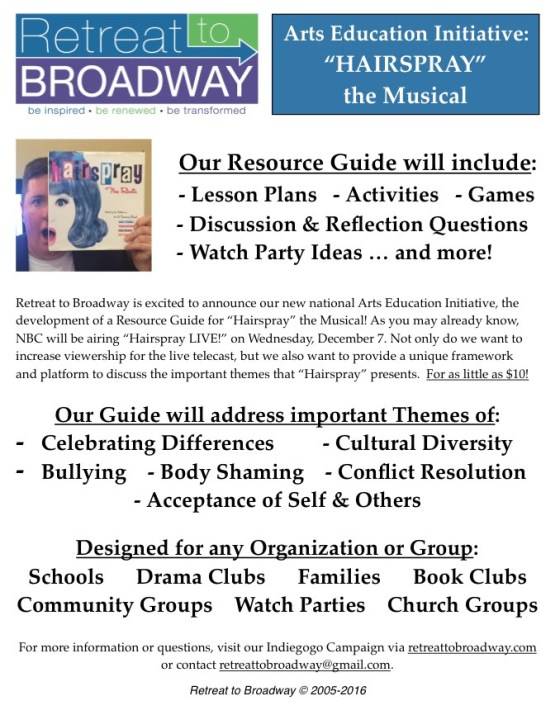The following piece is an excerpt from the Hairspray LIVE! Resource Guide, an arts education initiative developed by Retreat to Broadway. Find this lesson and many more exciting activities in the Resource Guide, available through the Retreat to Broadway website. Read more about this companion to the December 7 television event at Playbill.com.
by: Bradley J. Behrmann
Lesson Themes: Cultural Diversity, Music History, Music Theory, Current Events
In this activity, we will…
- Listen to examples of protest music from the 1960s when Hairspray is set.
- Identify musical and lyrical similarities and differences between “I Know Where I’ve Been” with other anthems from the Civil Rights Movement that bore cultural significance, especially “We Shall Overcome,” “Ain’t Gonna Let Nobody Turn Me ‘Round,” and “His Eye Is On the Sparrow.”
- Assess whether songs from this period still have cultural, musical, or political relevance in our world today.

INTRO
What is an “anthem”?
We’re going to take a closer look at one particular song from Hairspray: “I Know Where I’ve Been.” In this song Motormouth, Tracy, and Seaweed join with the African-American community of Baltimore to peacefully march to the television station in protest, because black youth were not allowed to dance on television alongside white youth. To lead the march, Motormouth sings the stirring anthem “I Know Where I’ve Been.”
Now, you might have heard the word anthem before, probably along with the word national. “The Star Spangled Banner” is the national anthem of the United States. But what is a regular anthem?
Definition of ANTHEM
1a) a psalm or hymn sung antiphonally or responsively [Note: “Antiphonally” means sung between two singers or groups of singers]
1b) a sacred vocal composition with words usually from the Scriptures
2) a song or hymn of praise or gladness
3) a usually rousing [Note: that means it gets people moving or excited] popular song that is…identified with a particular subculture, movement, or point of view
http://www.merriam-webster.com/dictionary/anthem
Let’s hold those definitions in our mind while we watch “I Know Where I’ve Been.”
PART I—“I Know Where I’ve Been”
VOCAB:
Anthem Hymn Antiphonal Strophic Bridge
Watch Queen Latifah as Motormouth sing “I Know Where I’ve Been” in the movie version of Hairspray.
“I Know Where I’ve Been” from Hairspray (2007)
Motormouth: Tracy, you’re gonna pay a heavy price.
Tracy: I know.
Motormouth: You’ll never dance on tv again.
Tracy: If I can’t dance with Seaweed and Little Inez, then I don’t want to dance on tv at all. I just want tomorrow to be better.
Motormouth:
There’s a light in the darkness
Though the night is black as my skin
There’s a light, burning bright, showing me the way
But I know where I’ve been
There’s a cry in the distance
It’s a voice that comes from deep within
There’s a cry asking why, I pray the answer’s up ahead, yeah
‘Cause I know where I’ve been
There’s a road we’ve been travelin’
Lost so many on the way
But the riches will be plenty
Worth the price, the price we had to pay
There’s a dream in the future
There’s a struggle that we have yet to win
And there’s pride in my heart
‘Cause I know where I’m going, yes I do
And I know where I’ve been, yeah
There’s a road we must travel
There’s a promise we must make
Oh, but the riches, the riches will be plenty
Worth the risks and the chances that we take
There’s a dream, yeah, in the future
There’s a struggle that we have yet to win
Use that pride in our hearts to lift us up to tomorrow
‘Cause just to sit still would be a sin
I know it, I know it, I know where I’m going
Lord knows I know where I’ve been
Oh, when we win, I’ll give thanks to my God
‘Cause I know where I’ve been
Oooh! Doesn’t it make you want to stand up and clutch your heart?! That’s that point! Anthems are meant to be so beautiful and so moving that you couldn’t possibly sit still after hearing it. Anthems are meant to call people to action. But we’re getting ahead of ourselves. Let’s go back to Merriam-Webster for a second.
QUESTION:
Is “I Know Where I’ve Been” a 1a) psalm or hymn sung antiphonally or responsively? It is definitely a hymn, but this one wasn’t sung antiphonally. That would be like “Down By the Bay” where one group sings:
Down by the bay!
[And the other group sings:] Down by the bay!
Where the watermelons grow…
Where the watermelons grow…
Back to my home…
Back to my… well, you get the idea.
Anyway, that little music trick isn’t used in this song. However, Motormouth does start the singing, and then that inspires a few more singers and a few more singers until the whole crowd is singing. But is it antiphonal? No.
QUESTION:
Is “I Know Where I’ve Been” a 1b sacred vocal composition with words usually from the Scriptures?
Yes. Motormouth doesn’t quote any Scripture directly, but she uses a lot of the same language and imagery. “There’s a light in the darkness” is the first lyric. There are dozens of references in the Bible to being a light in the darkness. For example, John 1:5 says “The Light shines in the darkness, and the darkness did not comprehend it.” Isaiah 9:2 reads “The people walking in darkness have seen a great light.”
FURTHER REFLECTION:
-Where else in Scripture discusses being “light in the darkness”?
-Have you ever felt like you are a light in the darkness? How?

QUESTION:
Is “I Know Where I’ve Been” a 2) song or hymn of praise or gladness? Alright, we’ve used this term “hymn” now twice. Let’s discuss. You probably think about a hymn being something you sing at church. That’s true. Many hymns have religious themes. But there’s also the “Marine’s Hymn” or the “Battle Hymn of the Republic.” Those songs also have a sense of national pride or a sense of duty. These are characteristics of hymns too. But hymns also mean something very specific musically. Hymns are what we call strophic. That means that when we finish one verse of music, we go back and use the same music for verse two, but we use different words. Think about “Amazing Grace.”
Verse 1….”Amazing grace, how sweet the sound…”
Verse 2…”Twas grace that taught my heart to fear…” It’s the same music, just different words.
That is important for “I Know Where I’ve Been,” because it uses a strophic structure too…or at least it starts that way. Check out the first lyric:
“There’s a light in the darkness…” It’s the same music as “There’s a cry in the distance…”
But things go differently in the next chunk of music. “There’s a road…” does not use the same melody. It uses something called a bridge. Songwriters use it so that people don’t get too bored listening to the same melody over and over again. It builds a “bridge” between two musical sections that are the same. Musical theatre writers use them all the time. Since Hairspray is a musical after all, this makes sense.
QUESTION:
In the section following the bridge, the lyrics start “There’s a dream..” Is this the bridge or the regular melody?
Is the section after that that starts “There’s a road…” a bridge or the regular melody?
FURTHER REFLECTION:
What might the lyric “There’s a dream…” be referring to?
WRAP-UP:
After all that discussion, do YOU think “I Know Where I’ve Been” is an anthem?
PART II—“We Shall Overcome”
Marc Shaiman and Scott Wittman who wrote the music and lyrics for Hairspray didn’t put an anthem in the show at this precise moment in the story by accident. Putting this style of song at the march was a very specific decision. During the Civil Right Movement in the 1960s in America, it was typical for large crowds of protesters to sing as they marched. Oftentimes, they would have a leader, just like Motormouth leads the crowd to the television station. One of the most famous protest songs from the Civil Right Movement is a song called “We Shall Overcome.”
Listen to Pete Seeger—an American folk singer and songwriter—sing “We Shall Overcome.” Listen to how the lyrics change from verse to verse. What are all the things “we shall” do? List some of them.
“We Shall Overcome”
Let’s use the same checklist as we did for “I Know Where I’ve Been” to figure out if “We Shall Overcome” is an anthem.
QUESTION:
Is “We Shall Overcome” a psalm or hymn sung antiphonally or responsively?
Is “We Shall Overcome” a sacred composition with words usually from the Scriptures? How?
Is “We Shall Overcome” a song or hymn of praise or gladness?
Is “We Shall Overcome a usually rousing popular song that is identified with a particular subculture, movement, or point of view?
Ah ha! That last one! “Identified with a particular subculture, movement, or point of view!” You might not know it, but the song “We Shall Overcome” was THE song most identified with the Civil Rights Movement.
Read this excerpt from Wikipedia to give you a little more background on this song and about the Civil Rights Movement.
“We Shall Overcome” is a protest song that became a key anthem of the African-American Civil Rights movement. The song is most commonly attributed as having descended from “I’ll Overcome Some Day”, a hymn by Charles Albert Tindley that was first published in 1901.
The modern version of the song was first said to have been performed by a group of Food and Tobacco Workers Union members led by Lucille Simmons during a 1945 strike in Charleston, South Carolina. In 1947, the song was published under the title “We Will Overcome” in an edition of the People’s Songs Bulletin (a publication of People’s Songs, an organization of which Pete Seeger was the director), as a contribution of and with an introduction by Zilphia Horton, then-music director of the Highlander Folk School of Monteagle, Tennessee (an adult education school that trained union organizers). Horton had learned the song from Simmons, and considered it to be her favorite song. She taught it to many others, including Pete Seeger,[1] who included it in his repertoire, as did many other activist singers, such as Frank Hamilton and Joe Glazer, who recorded it in 1950.
The song became associated with the Civil Rights movement from 1959, when Guy Carawan stepped in as song leader at Highlander, which was then focused on non-violent civil rights activism. It quickly became the movement’s unofficial anthem. Seeger and other famous folksingers in the early 1960s, such as Joan Baez, sang the song at rallies, folk festivals, and concerts in the North and helped make it widely known. Since its rise to prominence, the song, and songs based on it, have been used in a variety of protests worldwide.
Tindley’s songs were written in an idiom rooted in African American folk traditions, using pentatonic intervals, with ample space allowed for improvised interpolation, the addition of “blue” thirds and sevenths, and frequently featuring short refrains in which the congregation could join.[3] Tindley’s importance, however, was primarily as a lyricist and poet whose words spoke directly to the feelings of his audiences, many of whom had been freed from slavery only thirty-six years before he first published his songs, and who were often impoverished, illiterate, and newly arrived in the North.[4] “Even today” wrote musicologist Horace Boyer in 1983, “ministers quote his texts in the midst of their sermons as if they were poems, as indeed they are.”[5]
QUESTION:
In what ways are the music and lyrics of “I Know Where I’ve Been” and “We Shall Overcome” similar and in what ways are they different?
FURTHER REFLECTION:
How does “We Shall Overcome” make you feel?
WRAP-UP:
Would the characters in Hairspray have sung “We Shall Overcome”? Why or why not?
PART III—Supplemental Listening
Protest songs and anthems were a part of the soundtrack of the Sixties. Here are two more songs that show the dignity and resolve of the African-American Civil Rights Movement. As you listen to them, think about the songs you’ve already heard. Listen to the use of “first person” in the lyrics. The singers use “I” and “we” and “you” to create a very close relationship between the singer and the listener. It’s as if the singer is telling his or her own story, not someone else’s.
QUESTION:
As you listen, do you relate to the story they are telling?
For further listening and discussion, listen to “Ain’t Gonna Let Nobody Turn Me ‘Round” performed by Sweet Honey in the Rock and “His Eye Is On the Sparrow” performed by Mahalia Jackson.
LYRICS:
Aint gonna let nobody
Turn me ’round
Turn me ’round
Aint gonna let nobody
Turn me round
I’m gonna keep on walkin’
Keep on talkin’
Marchin’ into freedom land
[Follow the above pattern for other verses such as:
Aint gonna let (add the name a prominent segregationist or a racist public figure).]
Aint gonna let no jailhouse
Aint gonna let no policeman
GOSPEL SOURCE OF THIS SONG
The African American civil rights song “Ain’t Gonna Let Nobody Turn Me ‘Round” is based on an African American Gospel song “Don’t Let Nobody Turn Me Round”. A version of that song was recorded in 1947.
The African American Civil Rights song “Ain’t Gonna Let Nobody Turn Me ‘Round” is based on an African American Gospel song with the same title. In the Gospel song, the line “marchin’ in to freedom land” is sung “walkin’ into Glory land” or “walkin’ into heaven land”.
Like other civil rights songs, the words to this song aren’t fixed. However, “Ain’t Gonna Let Nobody Turn Me ‘Round” was sung in unison which means that those singing it knew in advance which verses were to be sung, and in which order the verses were sung. In contrast, the earliest renditions of the Gospel song probably were sung using a call & response pattern.
http://civilrightssongs.blogspot.com/2014/11/aint-gonna-let-nobody-turn-me-around.html
“His Eye Is On the Sparrow”
Performed by Mahalia Jackson
“His Eye Is On the Sparrow” has a simple melody, no exaggerated crescendos or theatrical flourishes. It’s a song that relies completely on the clarity of its verses and the dignity of the performer.
“It opens with a rhetorical question,” says ethnomusicologist Irene Jackson Brown.
“Why should I feel discouraged? Why should I feel in pain? Why should I feel lonely when clouds arise, when I have trouble and when I long for heaven and home? Now these are metaphors for safety and comfort, and the question is answered quietly and with economy of text. You know his eye is on the little old sparrow, and I know he cares for you and me.”
“His Eye Is On the Sparrow,” a song closely associated with the African-American experience, was written by two whites: composer Charles Hutchison Gabriel and lyricist Silvila Durfy Martin. Not much is known about Martin. She was born in Nova Scotia in 1866 and lived most of her life in Atlanta. Apparently, she was inspired to write “His Eye Is On the Sparrow” after visiting a sick friend. She mailed the lyrics to Gabriel, who worked for a gospel music publisher in Chicago. Before “His Eye Is On the Sparrow” reached Mahalia Jackson, it found a voice in actress and singer Ethel Waters.
http://www.npr.org/2000/09/03/1081503/his-eye-is-on-the-sparrow
CONCLUSION
QUESTION:
What are the similarities and differences between what you’ve learned about the Civil Rights Movement so far and what you know about the Black Lives Matter Movement?
Do protest songs from this period still have cultural, musical, or political relevance in our world today?
Find this lesson and many more exciting activities in the Resource Guide, available through the Retreat to Broadway website.
|


